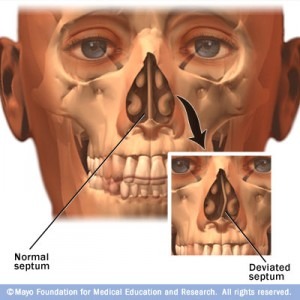How To Fix A Deviated Septum. One of the common causes of the discomfort and difficulty breathing with a deviated septum, is allergies and infections. Septoplasty straightens the septum, allowing for better airflow through your.

In some cases, the surgeon also will reshape the external appearance of your nose in a procedure called rhinoplasty.
Treatment of nasal obstruction may include medications to reduce the swelling or nasal dilators that help open the nasal passages.
A septoplasty is a procedure designed to correct a deviated septum. A deviated septum or septal deviation generally happens when the thin wall in between the right and left passages of the nose is displaced to a single side. The septum is the cartilage that divides the nose into two nostrils. All you need then is a septoplasty. One of the common causes of the discomfort and difficulty breathing with a deviated septum, is allergies and infections. Performed through the nostrils, a doctor can readjust and reinforce the septum to fix the deviation.
You'll need surgery to correct a deviated septum. During septoplasty, your nasal septum is straightened and repositioned in the center of your nose. A deviated septum is a condition in which the nasal septum -- the bone and cartilage that divide the nasal cavity of the nose in half -- is significantly off center, or crooked, making breathing. That being said, if you want to improve your airway, you could try to use a breathe-rite strip at night. One of the main treatments for a deviated septum is called septoplasty - a surgical procedure performed entirely through the nostrils, accordingly, no bruising or external signs occur. Septoplasty straightens the septum, allowing for better airflow through your nose.
With the help of a dropper, you can put some drops of lavender oil directly into the nostrils if you prefer. Symptoms due to the deviated septum — particularly nasal obstruction — often completely resolve. The septum is the wall of bone and cartilage that divides your nose into two separate nostrils.






